The Casting of Frank Stone review - an insubstantial origin story with some precious moments
Point and moot.
As a huge fan of both developer Supermassive Games' interactive horror marathons and publisher Behaviour Interactive's asymmetrical multiplayer Dead by Daylight, I thought The Casting of Frank Stone might have been a daydream I conjured during yet another sleepless night. Unfortunately, it's actually a drawn-out multiverse adventure with pacing as lethargic as I am.
The game follows Supermassive tradition – as in the developer's 2015 cult hit Until Dawn and 2022's The Quarry – by focusing on a group of small-town teens and finger-wagging adults as they all discover the supernatural evil saturating their lives. Frank Stone, the game, effectively serves as an explanation for Dead by Daylight's cyclical set up, its repetitive Killer-versus-four-Survivors trials. Though it does this peripatetically, with an original cast of characters facing an original set of circumstances.
Their story unfolds in two overlapping parts: in the 80s, a group of friends filmed a horror movie at an abandoned steel mill. In 2024, Frank Stone, the guy, is a serial killer whose screaming soul is trapped on cloudy slices of their Super 8 film. After dying at the mill decades prior, Frank was incorporated into the billowing, unexplained Entity, a cosmic spider-being Dead by Daylight players will recognize as that game's progenitor. So layers of interdimensional sorcery are somehow responsible for this circuitous plot. In this origami timeline, you control different iterations and family members of the original friend group – the young and older versions of stoic director Linda, the grieving daughter Madison, and so on.
But, despite the interesting intricacies of its plot, The Casting of Frank Stone's catatonic horror is hardly explored in its interactive narrative, which spends too much time on inconsequential exposition; romantic threads unroll into nothing, character revelations never resurface, and so on. You'll have to wait for about four of the game's approximately six hour run time to pass heavy and sedated, like elephant footsteps, before any action starts.
In that sense, Frank Stone is the most cinematic of all Supermassive's interactive horror games. It's much more a director's cut movie than a game, but its emphasis on movie magic at least means that it is populated by glorious Unreal Engine 5 graphics; blood glistens so purely it seems to radiate heat, and the game's many mysterious corners (in a haunted steel mill, a Victorian mansion, an imagined wet forest…) appear as dark as a blank mind.
In the past, I've found Supermassive environments to be overwhelming, with too many knick-knacks to knock over and analyze, but Frank Stone's unique Plunderer's Instinct mechanic helps simplify things. While it's only available after you either complete a Frank Stone playthrough or purchase the game's deluxe edition, the Plunderer's Instinct mechanic helpfully highlights important items in cobweb white.

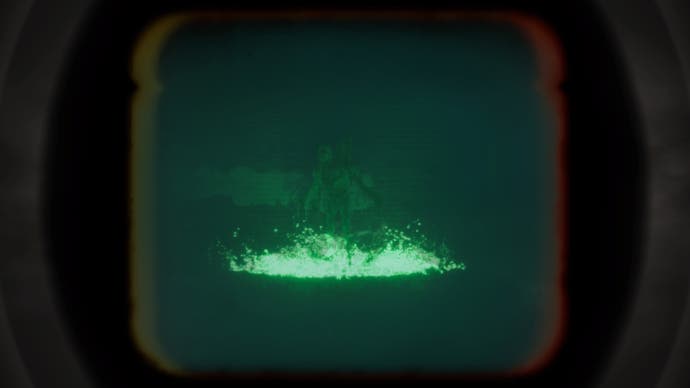
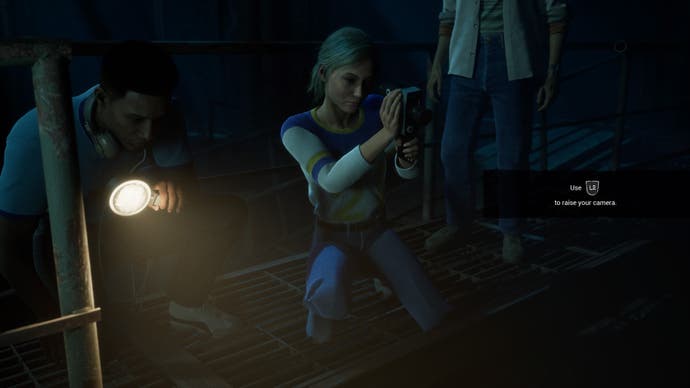
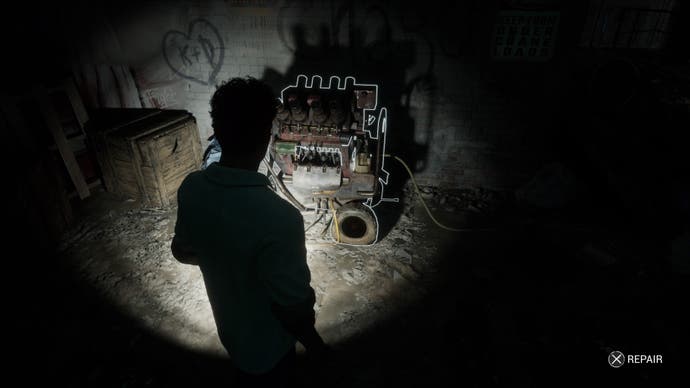
However, aside from a few rote puzzles and fiddly controls, Frank Stone doesn't give you much to interact with. When it does, your input feels insignificant. Instead of past games' exhilarating, deadly quicktime event chase sequences, for instance, Frank Stone borrows Dead by Daylight's more forgiving skill check windows. It uses them while characters repair sputtering generators (Survivors' main objective in DbD) and, more infrequently, in the unceremonious seconds before a character is divided into butcher shop pieces. In either case, your contribution to your character's trajectory feels minimal.
The rest of the game's interactive aspects feel similarly inconsequential. You sometimes have to manually balance characters on three-foot wide pieces of plywood for no reason. More positively, you now have the new option to make characters run instead of pushing them into another Supermassive slow-shuffle. But none of it matters. A pop-up window ominously alerts you to when a choice you've made has made your "fate changed" or "fate sealed," but many of the game's choose-your-own-adventure dilemmas (respond with skepticism or curiosity? Be consoling or confrontational?) seem unrelated to their final outcome.


Even the game's brand-new passive combat system lacks pressure. Many characters desperately clutch an enchanted Super 8 camera like it's a balloon about to pop. It might as well be. In many dire cases, this fragile camera functions as characters' only lifeline, containing the ability to dispel Frank's restless, apple-green spirit the longer they "shoot" it. These moments should be tight encapsulations of Supermassive's long standing thesis statement, which it sometimes bangs you over the head with here: art contains infinite possibility and, therefore, infinite consequence.
But the game's stakes are often either too low or too obscure. In combat, Frank approaches you from far away and barely moves. He's more a swaying Halloween decoration than an imminent threat. Out of combat, death happens too suddenly to feel like a consequence. It's more like a random, cold drip of condensation plopping onto your clean scalp from your air conditioner. Unwelcome, but too abrupt to contemplate.
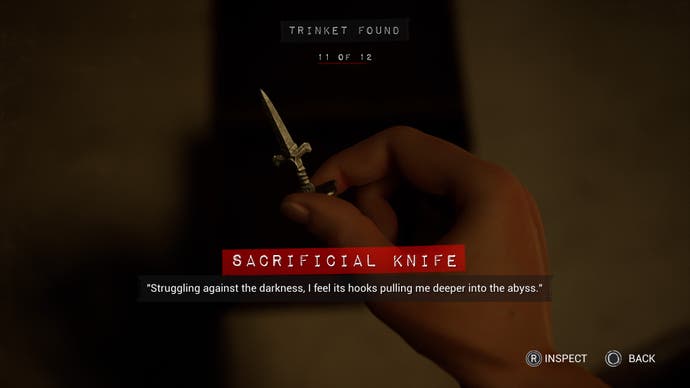
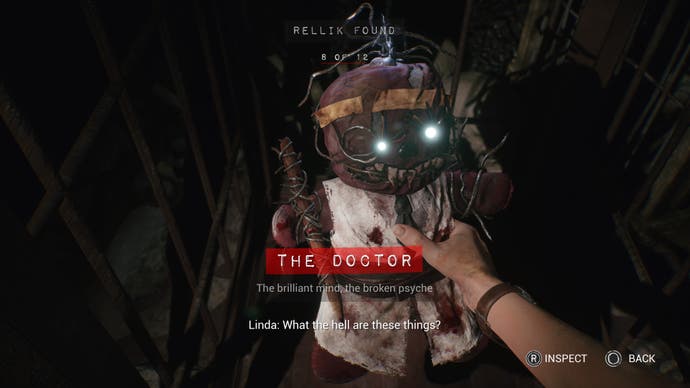
But while The Casting of Frank Stone falls short as a standalone Supermassive game, it's nonetheless satisfying to this Dead by Daylight enthusiast. The game doesn't rely on any preexisting DbD lore, so it should be intelligible to any player. But it also makes several careful references to its source material, like the way some characters are strung up by the shoulder and stuck onto meat hooks, which Killers force Survivors onto in Dead by Daylight. Killer characters, including the mauled Doctor and masked Huntress, are also available to find as tubby collectible dolls, while power add-ons like the rancid Sacrificial Knife are also collectible as tiny metal charms.
And Frank Stone has great music and oppressive sound design. It borrows several sounds from DbD, including the paranoid keyboard blip that flits like a luna moth when you acquire an item, as well as the synth exhale of a successful skill check. Often, you hear the Dead by Daylight loading screen dirge dissolve in clever ways, pounding itself into your playthrough like a bad thought. Ultimately, The Casting of Frank Stone is most successful in these kinds of subtleties, the ones that reflect the trapped rhythm of its connecting timelines and Dead by Daylight's Survivors, who are hunted for eternity. Frank Stone's music repeats, its cast members reappear throughout history, and life, according to this game, is a wheel you're bound to. It might not always be pleasant, but the important thing is that it's yours.
A copy of The Casting of Frank Stone was provided for review by Behaviour Interactive.


